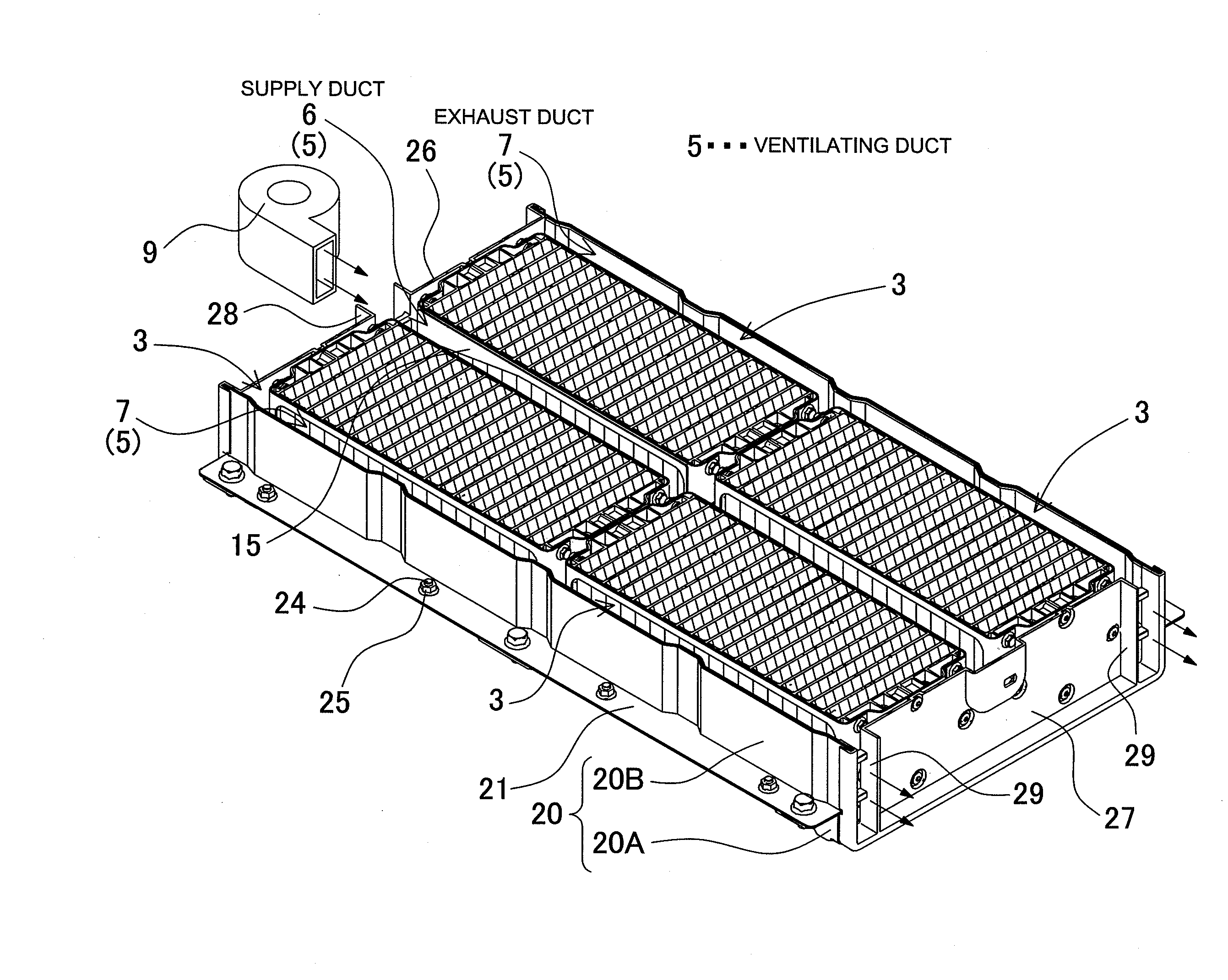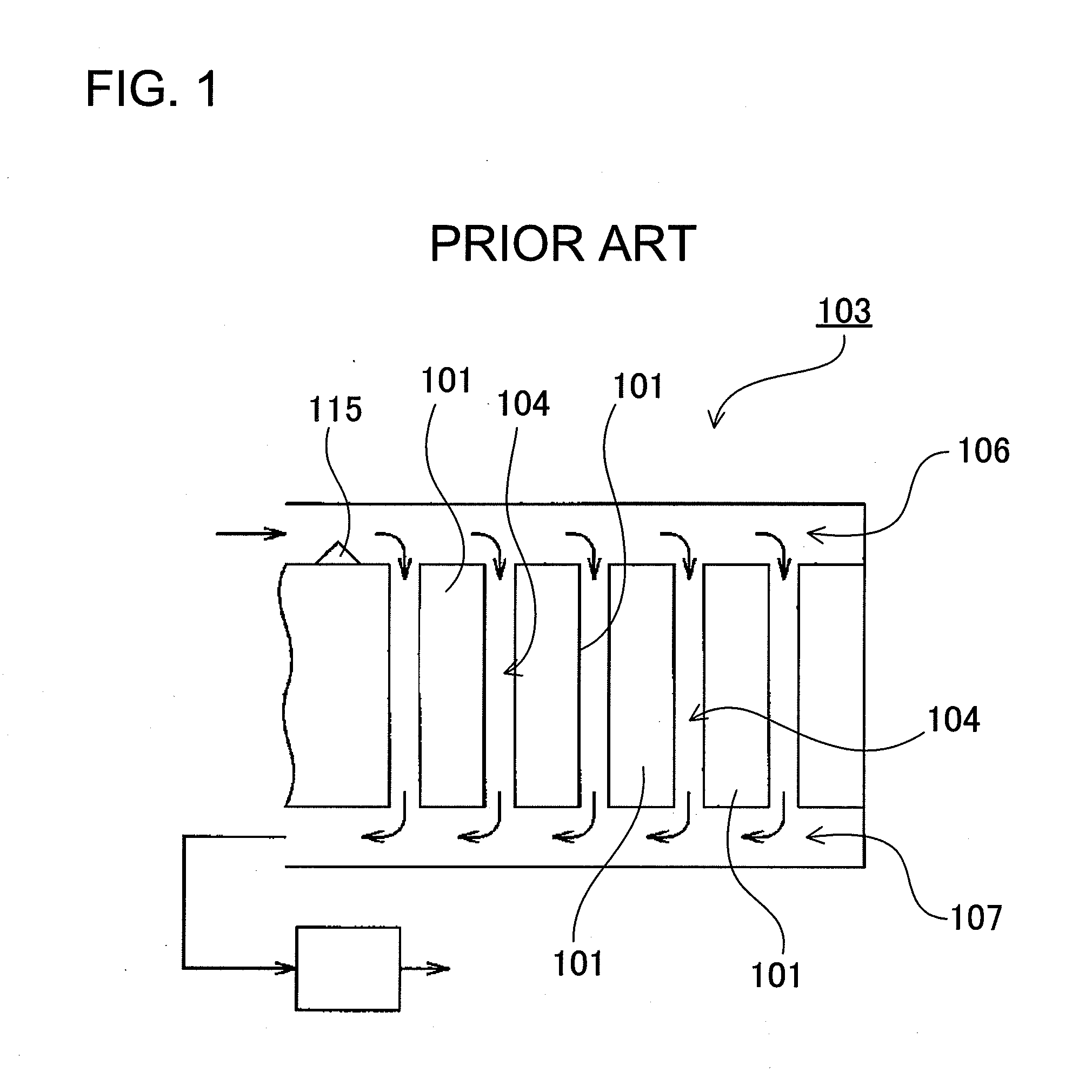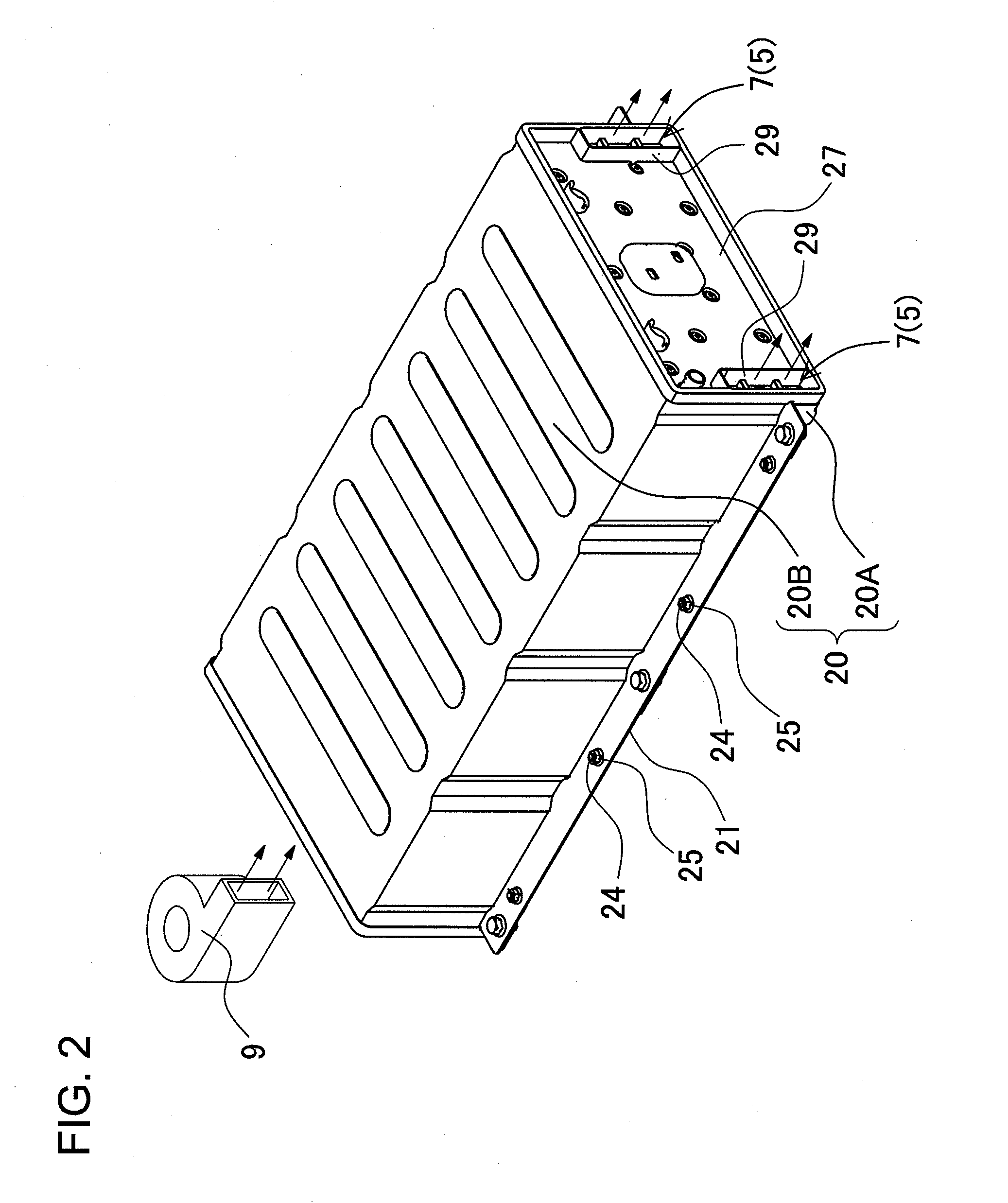Battery system
a battery system and battery technology, applied in the field of battery systems, can solve the problems of difficult uniform cooling of all battery cells to minimize temperature differences, easy over-charge shorten the life of batteries with high remaining capacity, so as to reduce the temperature differences of battery cells, reduce the cost of battery cells, and reduce the cost of batteries
- Summary
- Abstract
- Description
- Claims
- Application Information
AI Technical Summary
Benefits of technology
Problems solved by technology
Method used
Image
Examples
Embodiment Construction
)
[0049]The following describes embodiments of the present invention based on the figures.
[0050]FIGS. 2-8 show the first embodiment of the present invention, FIGS. 15-18 show the second embodiment of the present invention, FIGS. 19-21 show the third embodiment of the present invention, and FIGS. 22-24 show the fourth embodiment of the present invention. The battery systems described in these embodiments are primarily suitable for use as power sources in electric powered vehicles such as in a hybrid car or plug-in hybrid car, which are powered by both an engine and an electric motor, and in an electric automobile (electric vehicle [EV]), which is powered by an electric motor only. However, the present invention can also be used in non-automotive applications where high output is a requirement.
[0051]In the following embodiments, the battery system is provided with battery blocks 3 having a plurality of battery cells 1 stacked in a manner establishing cooling gaps 4 between the battery ...
PUM
| Property | Measurement | Unit |
|---|---|---|
| temperature | aaaaa | aaaaa |
| surface area | aaaaa | aaaaa |
| currents | aaaaa | aaaaa |
Abstract
Description
Claims
Application Information
 Login to View More
Login to View More - R&D
- Intellectual Property
- Life Sciences
- Materials
- Tech Scout
- Unparalleled Data Quality
- Higher Quality Content
- 60% Fewer Hallucinations
Browse by: Latest US Patents, China's latest patents, Technical Efficacy Thesaurus, Application Domain, Technology Topic, Popular Technical Reports.
© 2025 PatSnap. All rights reserved.Legal|Privacy policy|Modern Slavery Act Transparency Statement|Sitemap|About US| Contact US: help@patsnap.com



